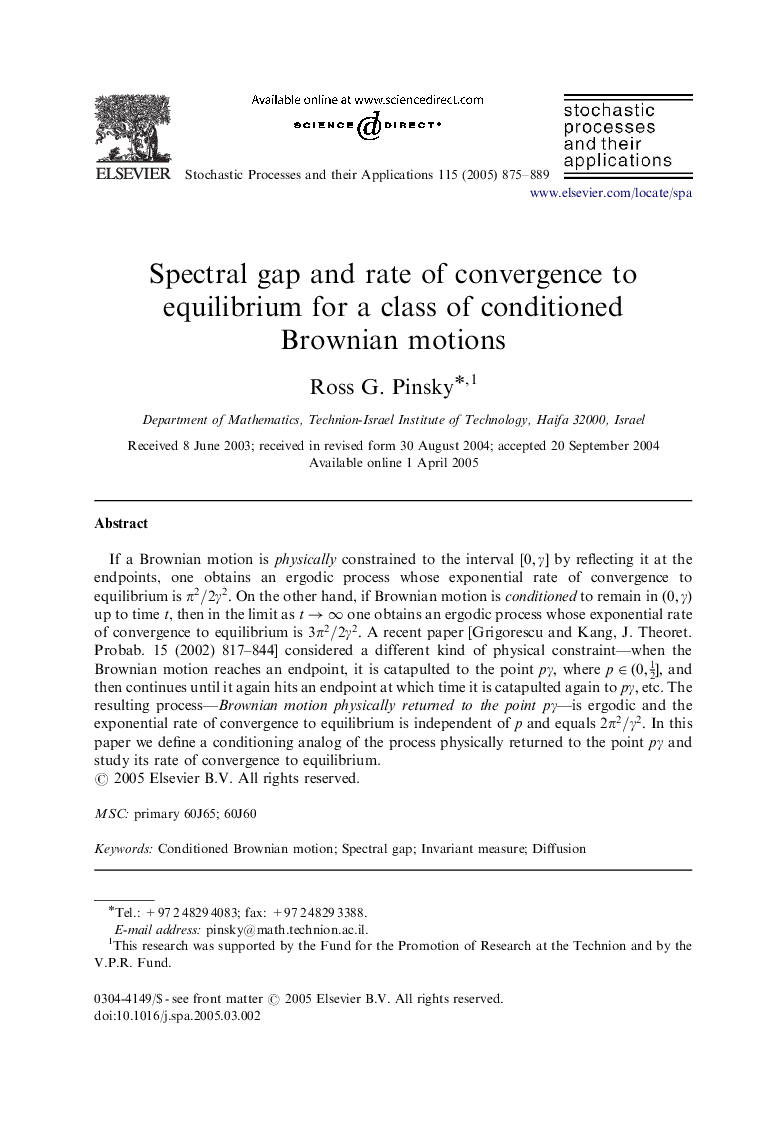| Article ID | Journal | Published Year | Pages | File Type |
|---|---|---|---|---|
| 10527347 | Stochastic Processes and their Applications | 2005 | 15 Pages |
Abstract
If a Brownian motion is physically constrained to the interval [0,γ] by reflecting it at the endpoints, one obtains an ergodic process whose exponential rate of convergence to equilibrium is Ï2/2γ2. On the other hand, if Brownian motion is conditioned to remain in (0,γ) up to time t, then in the limit as tââ one obtains an ergodic process whose exponential rate of convergence to equilibrium is 3Ï2/2γ2. A recent paper [Grigorescu and Kang, J. Theoret. Probab. 15 (2002) 817-844] considered a different kind of physical constraint-when the Brownian motion reaches an endpoint, it is catapulted to the point pγ, where pâ(0,12], and then continues until it again hits an endpoint at which time it is catapulted again to pγ, etc. The resulting process-Brownian motion physically returned to the pointpγ-is ergodic and the exponential rate of convergence to equilibrium is independent of p and equals 2Ï2/γ2. In this paper we define a conditioning analog of the process physically returned to the point pγ and study its rate of convergence to equilibrium.
Related Topics
Physical Sciences and Engineering
Mathematics
Mathematics (General)
Authors
Ross G. Pinsky,
